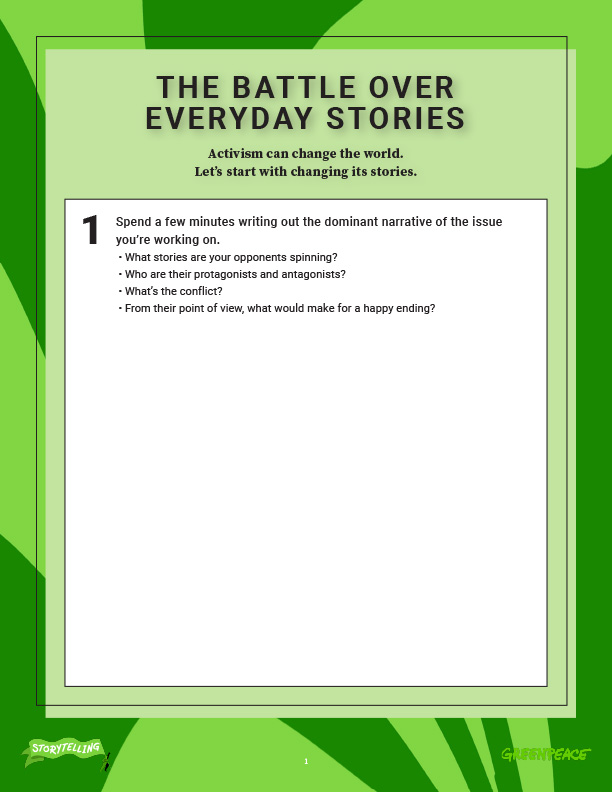EXERCISE: THE BATTLE OVER EVERYDAY STORIES

Activism can change the world.
Let’s start with changing its stories.
1
Spend a few minutes writing out the dominant narrative of the issue you’re working on.
- What stories are your opponents spinning?
- Who are their protagonists and antagonists?
- What’s the conflict?
- From their point of view, what would make for a happy ending?
2
Consider why you find this narrative inadequate.
- What frame(s) does their story use, and which ones do they ignore? Remember that we don’t want to use our opponent’s frame, even if we’re challenging it. Using their frame means that we’re still telling our story according to their rules.
- Consider other aspects of their narrative: Whose interests does it value, and whose does it dismiss? How does it distort reality as you understand it?
3
In a paragraph or two, write out your counter narrative.
- Determine your protagonist and antagonist. Maybe you think the true heroes of the story are not the elite politicians but the farmers building new ecological practices or the school children striking for climate action!
- Choose your central conflict and decide how to frame it. Is this issue about the economy or security, or maybe the right frame is indigenous rights and colonial oppression?
- Describe an end goal for your story that’s both realistic and hopeful.
- And as you craft your story, make sure to tailor it to be as attractive as possible to your campaign’s target audience. These decisions can come down to choices such as the story elements above or crafting level decisions like language and image selection.
DOWNLOAD THIS EXERCISE

